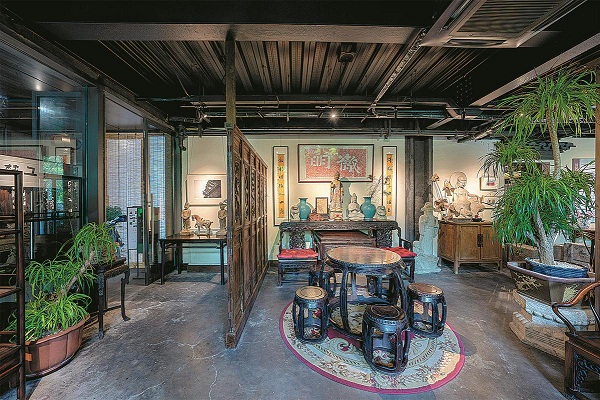 |
|
An internal view of the main hall of the Ming Che Shan Fang garden. GAO ERQIANG/CHINA DAILY |
Yin retained the modern architectural style and structural characteristics of the factory, integrating its Bauhaus style featuring simple geometric shapes with architectural characteristics in classic Suzhou gardens which had been famous for centuries in the country. They included white walls, black tiles, and hollowed windows.
The traditional Chinese furniture from the Ming and Qing dynasties he collected, along with books, brushes and inkstones for calligraphy, are displayed in the structure of the garden, forming a balance between modernity and tradition.
A core theory in garden design is borrowing scenery, incorporating background whether far or near into a composition through something, usually windows, in the middle, Yin said.
"For example, we keep the French windows of the factory, so that visitors can see through the window from inside to borrow scenery from outside, which makes the structure look more spacious," he added.
Yin said he sought advice from Cai Qiuzhi, an expert in the landscaping renovation of Jiading for more than 60 years, and gained knowledge from books.
"Yin's garden is the epitome of Chinese classic gardens. It's tiny, compared with other Chinese gardens, but people don't have such a feeling when they visit it," Cai commented. "It looks natural, simple, yet elegant. There is no expensive bonsai, nor artificial interference. All decorations and scenery are original, but carefully planned."
"Small classic gardens are a sanctuary for its owner, nothing like other types of Chinese gardens which are spacious or consist of cultural relics, nor parks in other countries with large lawns for sports."

